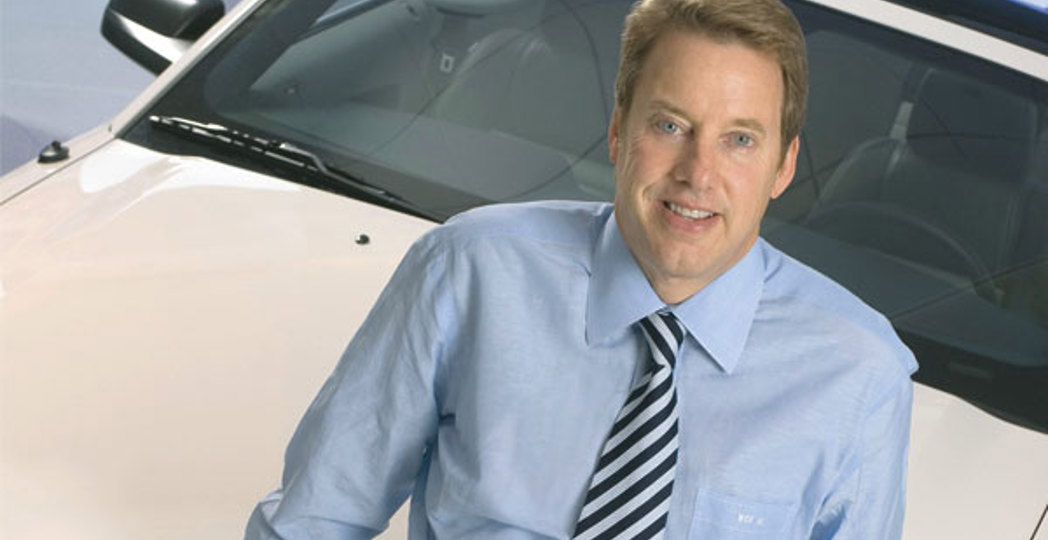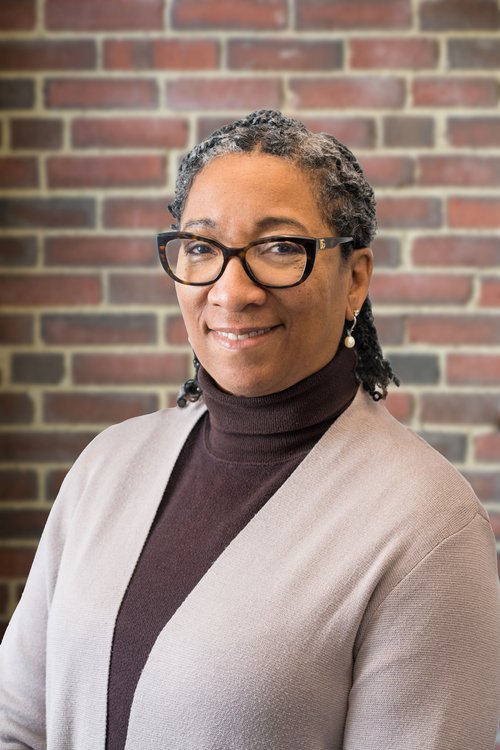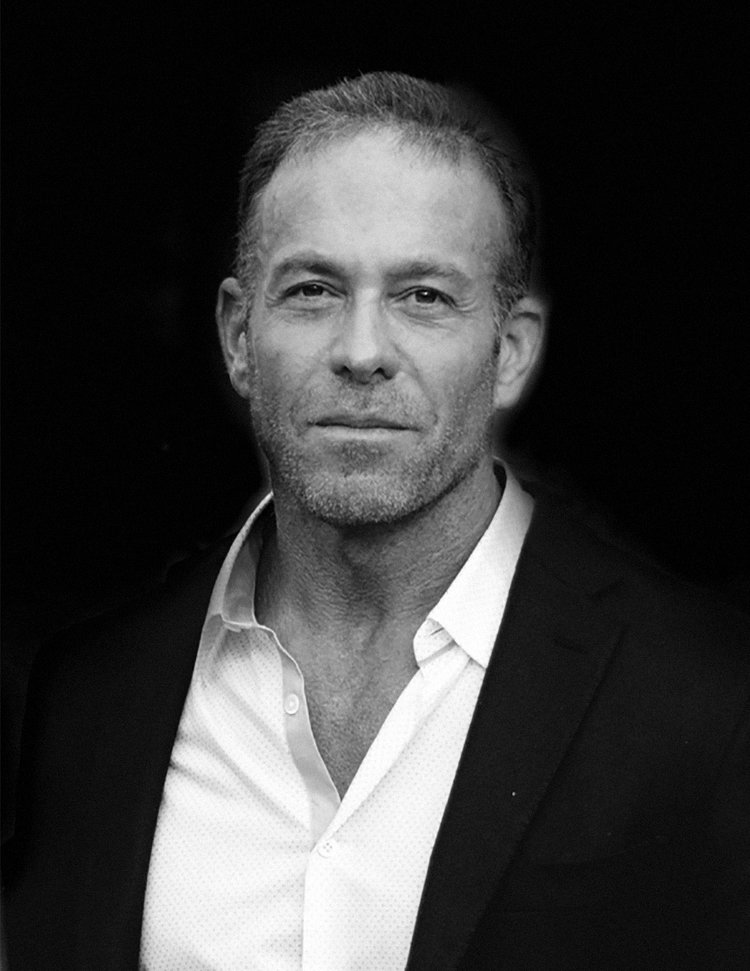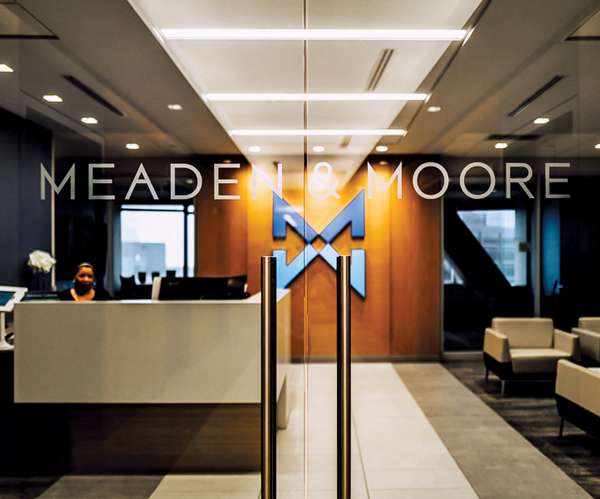Ford's Relationship with Northeast Ohio
Suburban Detroit may be its home, but Ford Motor Co. has always had a unique, symbiotic relationship with Northeast Ohio.
by Terry Troy | Nov. 30, 2016 | 5:00 AM

It started with a 10-mile race in Grosse Point, Michigan. Cleveland automotive pioneer Alexander Winton was pitted against upstart automotive engineer Henry Ford. While Winton was heavily favored to win, it was Ford who took home the checkered flag. But ever since that sunny fall day in October 1901, the fortunes of Ford Motor Co. and Northeast Ohio have been inextricably linked.
Led today by Executive Chairman William Clay Ford, Ford Motor Company is playing a central role in re-shaping the auto industry. And it builds more than 80 percent of its vehicles sold in North America in the United States.
“We didn’t take the bailout. We paid back our debts. We pulled ourselves up by our bootstraps,” said Ford, speaking at an entrepreneurs’ conference in Detroit earlier this year. “We’re investing in America. We’re exporting out of America. So I think we have a great story to tell.”
Ford came out of its Way Forward restructuring program stronger after divesting under-performing assets and brands prior to the economic downturn in 2009. Its “new way forward” involves investing heavily in its domestic facilities and production. In the past five years alone, Ford has invested more than $12 billion in the United States, with a hefty portion being spent right here in Northeast Ohio.
While Ford Motor Co.’s headquarters are in Dearborn in suburban Detroit, Cleveland and Northeast Ohio have played an integral role in the Blue Oval’s success. Facilities here have opened and closed and been rebuilt. Jobs have been won, lost and won again. Generations have come and gone. But through it all the partnership between Ford Motor Co. and Northeast Ohio has endured, and today is perhaps stronger than ever before — forged and annealed by our shared history.
“If you look over the last 10-plus years, the relationship with our union partners in Northeast Ohio has really evolved,” says Joe Hinrichs, president, The Americas, for Ford Motor Co. “It has become much more of a partnership and a joint competitive working relationship.”
Seen as a driving force behind Ford’s future product development and production, including the conversion of the best-selling F-150 to aluminum and the Cleveland-made EcoBoost engine, Hinrichs has an engineering and manufacturing background. His personable approach and straightforward manner have combined to create a unique bond with Ford dealers across Northeast Ohio. But he also holds a special place in his heart for our state as well.
“I certainly don’t hide the fact that I am a proud Buckeye,” says Hinrichs. “I was born in Columbus and raised in Fostoria. My wife, Maria, is from Brecksville and went to Magnificat High School in Rocky River.”
Two of Hinrichs’ three children are attending college in Ohio as well. While daughter Anna is in pre-med studies at Northwestern University, son Andrew is studying business at the University of Dayton — Hinrichs’ alma mater. Youngest daughter Sarah is studying engineering at The Ohio State University.
Ford dealers across our region have embraced Hinrichs’ special connection to our area and his no-nonsense management style.
“Over the course of time, you meet all kinds of people in leadership positions,” says Jim Herrick, CEO of the Liberty Ford Auto Group, the largest Ford Dealer Group in Ohio. “Many times, those people are a little more standoffish than others. Joe is not one of those people.
“In an organization as large as Ford Motor Co., it’s very easy to get a little profit-centric and sales-centric because you have to work for stockholders. It really takes somebody like Joe Hinrichs to understand the needs of the market, and what processes need to be to developed to deliver world-class, quality vehicles.”
Other dealers were impressed with Hinrichs before they knew he would take a leadership position.
“The first time I met him I was at a national Ford meeting a couple of years back, and I really didn’t know who he was or what he was doing there,” recalls Brian O’Donnell, owner and dealer principal of Valley Ford Truck and Valley Truck Centers.“ He was walking through the audience, introducing himself. I told him who I was and where I was from, and he immediately stopped and started talking about his connections to Ohio and our area. Next thing I know, he gets up on stage and I find out he’s our new guy, our president — it was amazing.”
Some dealers credit Hinrichs’ engineering background with Ford’s product quality turnaround.
“The Ohio connection is the initial thing, but I think even more important is the fact that he is an engineer,” says Jim Bass, president of Mike Bass Ford in Sheffield Village. “Many times, when you get a leader, they come from the business or sales side. When it comes right down to it, as a dealer, and ultimately as a consumer, it’s all about product.
“The guys behind the scenes, on
the drawing board or the computer, deserve a lot more credit. But it’s also the people on the assembly line, and the assembly lines across a vehicle’s supply chain that make it happen.”
Take the Cleveland Engine Plant in Brook Park, for example. “The people there build terrific engines,” says Bass. “And those engines go into products all around the country — around the world, for that matter.”
The Cleveland Engine Plant in Brook Park employs approximately 1,600 UAW members who include production, skilled trades and janitorial workers, according to Mark Payne, president of UAW Local 1250. The plant also employs salaried employees and electricians.
“The importance of the Cleveland Engine Plant, its employees and the ancillary jobs created at suppliers to the plant should not be understated,” says Louis A. Vitantonio, president of the Greater Cleveland Automobile Dealers’ Association. “It is a major driver of our economy in Cuyahoga and surrounding counties.”
It also helps maintain Ford’s leadership as the best-selling brand in Northern Ohio.
“Manufacturing facilities in Northern Ohio help create a rare sense of pride among Ford customers that is unlike many regions,” says Megan Carlini, regional sales manager for Ford Motor Co. in the Pittsburgh region, which includes Northeast Ohio. “Whether a customer has a personal connection to Ford manufacturing in Northern Ohio or not, residents are proud to support the economy and buy locally built products.”
As in any business relationship, there have been a few bumps in the road between Ford and the UAW, says Payne.
“We have seen our Casting Plant torn down, and Engine Plant Two and the Aluminum Plant idled,” he says.
Ford also wanted to close Engine Plant One, “but working with our membership, we came to an agreement with Ford to give the plant new life, today assembling the most desirable engines in America,” he adds.
Ford also stepped up to the plate in 2013, investing more than $200 million in Brook Park and adding more than 450 new jobs to support rising consumer demand for the new 3.5-liter EcoBoost and 3.7-liter V6 engines. Further collective bargaining, and an additional investment of more than $145 million by Ford this year, brought engine production from Valencia, Spain, back to the Cleveland Engine Plant. The new 2.0-liter and 2.3-liter four-cylinder EcoBoost engines produced in Spain for the European market are also now being produced at Brook Park for the U.S. market.
While the Cleveland Engine Plant has benefited from Ford Motor Co.’s insourcing efforts, the same can be said of the Ohio Assembly Plant in Avon Lake. The decision to move manufacture of the medium-duty F-650/F-750 trucks from Mexico back to Ohio in 2014 was not a goodwill gesture, but rather a sound business decision. It also was part of a collective bargaining agreement the UAW and Ford reached in 2011.
“As a dealer, moving the manufacture of our medium-duty trucks back to Avon Lake from Mexico has made all the difference in the world,” says O’Donnell. “We had a plant down in Mexico and a partnership with a manufacturer that wasn’t working. It couldn’t meet the quality controls and the production metrics on which Ford Motor Co. had built its business and quality reputation.”
“When Ford rewards a plant with that kind of product, it shows that the company believes in the capability of the workers in our area,” adds Bass.
While our area’s natural resources and transportation infrastructure are vitally important to the Ohio Assembly Plant’s operations, so is its workforce.
“That plant had built the Econoline van successfully for years,” says O’Donnell. “And while it still makes versions of the E-Series Econoline, tapping into the workforce’s experience for medium-duty truck manufacturing only made sense. This workforce is positive and passionate about the product.”
But it could only happen if the government, Ford and the unions were all on the same page.
“We worked closely with the State of Ohio, as well as the UAW, to make the business case to move work from the joint venture in Mexico back to Avon Lake,” says Hinrichs. “Then to see it happen, to have it launch on time, it’s simply a great story of how everyone came together — the union, the government and our company — to find a way. It’s an example we use in our own discussions about bringing more production back to the United States.”
Two years ago, Ford invested more than $168 million at Avon Lake, securing more than 1,000 UAW hourly jobs for new truck production. New medium-duty F-650/F-750 trucks, the backbone of Ford’s commercial truck lineup, began rolling off the line last August. The plant is still producing the Ford E-Series (Econoline) cutaway vans and stripped chassis commercial vehicles.
But the Blue Oval wasn’t through at Avon Lake. Earlier this year, Ford announced an investment of $200 million to further upgrade the Ohio Assembly Plant, enabling the production of its super-duty chassis cab at the plant. It was an investment that created or retained an additional 150 jobs at the plant, which now also produces the F-350, F-450 and F-550 super-duty trucks.
This year alone, Ford has invested more than $345 million in its manufacturing facilities in our area.
“Remember that every vehicle produced in Avon Lake has a commercial application. In many cases, they are work trucks where something else needs to be added to make it a complete vehicle,” says Bass. “Some will be made into dump trucks or stake bodies; others might be made into ambulances. Still others might have some sort of aerial component added for work in trees or on power lines.
“All this work will be performed by upfitters outside the plant. The great news for our area is that, over time, these upfitters will likely locate close to the Avon Lake plant.”
While making major investments in Northeast Ohio is sure to reap great profits for Ford, it wouldn’t have been possible without prudent business and financial leadership. In 2005 and 2006, Ford started to divest itself from under-performing assets and brands that didn’t fit its long-term goals. In 2009, when the Great Recession hit, Ford found itself well-positioned to weather the economic downturn. But was it brilliant insight or just fortunate happenstance on the part of Ford’s management?
“Well before the financial crisis of 2009, we initiated a substantial restructuring of our business called the Ford Way Forward,” says Hinrichs. “It included a number of plant closings, as well as a reconciliation of our product lineup.
“Following the restructuring, we were able to leverage our assets and borrow $23 billion, which got us through the
financial crisis.”
And while other domestic manufacturers visited Washington in 2009 with their corporate hats in hand, Ford attended only to show its support because it did not need to request a bailout.
“You always want to be on the good side of luck,” says Hinrichs, “but oftentimes you have to create the opportunity to be lucky.
“Coming out of the financial crisis, we were a much stronger company, and we could invest in our products,” he adds. “Today, we have great products, we’ve been gaining share and have posted record profits ever since.”
Ford’s corporate profits formed the base for the company’s recent investments in our region.
“Many times, people tend to discount corporate profits, and separate them from the real world,” says Herrick. “Yet corporate profits are the guarantee that provides you with the funding to develop quality, new products.
“There was a time when domestic manufacturers didn’t have quality products, but today I can easily say that there is very little difference in quality or available features between Ford’s products and our offshore competitors.”
Many charities, communities and philanthropic causes look to the Blue Oval for support. Even in the worst of economic times, Ford never lost sight of its civic leadership and responsibility in our region.
“One of the great things that I have found in the DNA of Ford Motor Co. is a commitment and involvement with all our communities,” says Hinrichs. He joined the company in December 2000 after serving as a partner and senior vice president of the Ryan Enterprises Group and a 10-year stint in various manufacturing positions with General Motors.
The two unions working at both of Ford’s major manufacturing facilities are actively involved year in and year out, too.
“We give to the Salvation Army’s Angel Tree for Christmas and Feed the Needy for Thanksgiving,” says Bill Samples, president of Local 2000, which has more than 1,500 members working at the Avon Lake plant among other non-Ford units. “We give to Hope for the Holiday and Juvenile Diabetes; we do a lot within our local community as well.”
Examples include the Ford/UAW Community Service Team that supplies labor, such as building wheelchair ramps, for charities in Cuyahoga and Lorain counties.
“We also have launched a program that builds ramps for the elderly and disabled, which includes veterans returning from active duty,” says Payne. “Our Local 1250 members also work with Habitat for Humanity, finishing homes for those who are in need.
“We work with and contribute to the Salvation Army, the March of Dime and the United Way. We contribute to the Wounded Warrior Veterans drive, and we host Special Needs Christmas parties and contribute gifts.”
Ford dealers and their employees across Northeast Ohio also are involved with numerous local charities.
“It’s not just Ford dealers, but all franchised new-vehicle dealers in Northeast Ohio give back to their communities in many ways,” adds Vitantonio of the GCADA.
“We expect our employees and dealers to be involved in the community and encourage our employees to take 40 hours a year to give back to their community in some way,” says Hinrichs, “It really goes back to Henry Ford and that family connection that goes back more than 113 years.”
And perhaps even further to an October day in Grosse Point, Michigan. Henry Ford used the funds from that race to found the Henry Ford Co., which would go on to become Cadillac. In 1903, Ford used the funds from the sale of that company to create Ford Motor Co., which would grow to become one of the most successful and innovative automotive companies and largest corporations in the world.
It’s a company that shares a unique and storied history with the people of Cleveland and Northeast Ohio.
Trending
-
1
-
2
-
3
-
4
-
5










